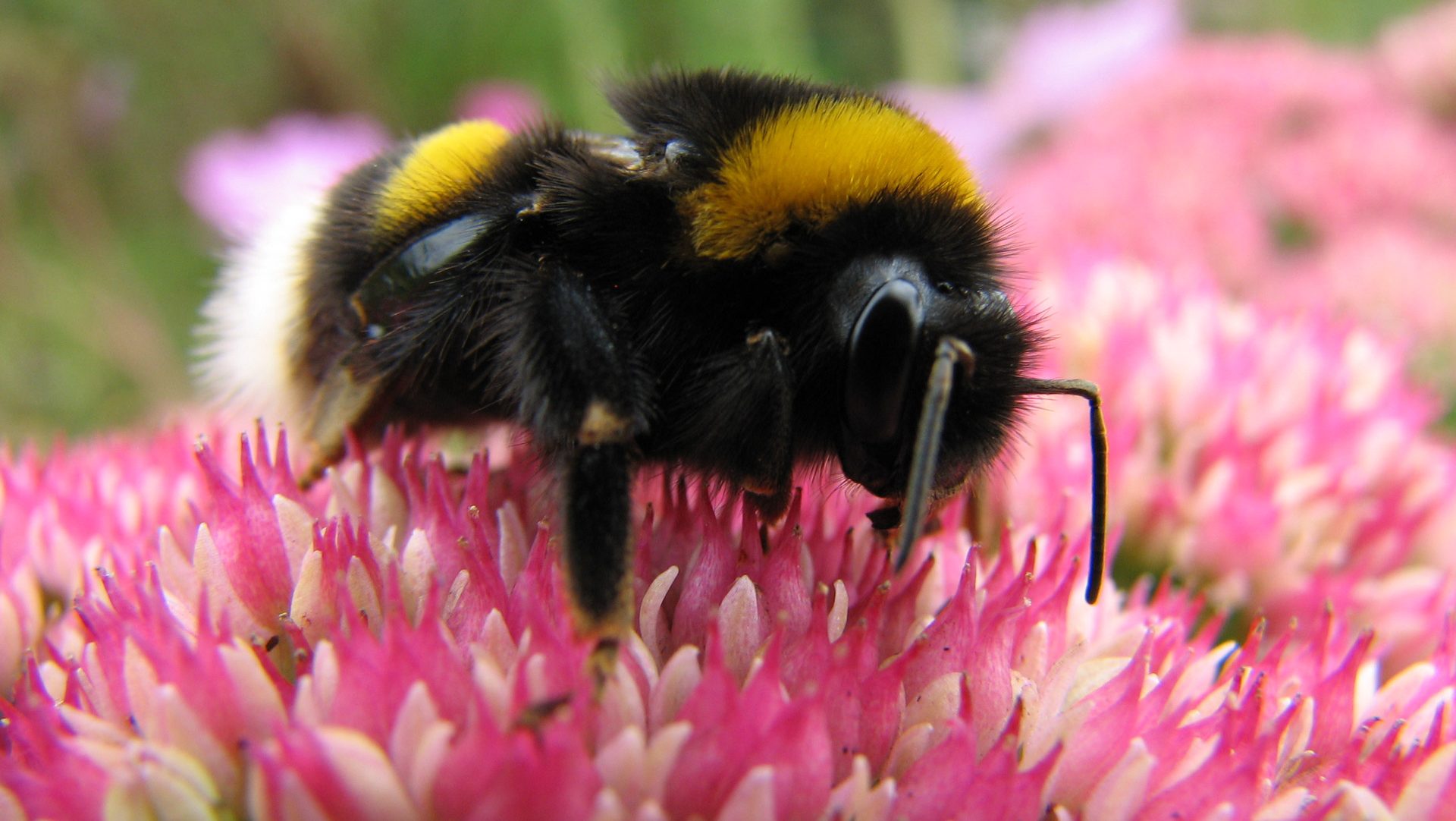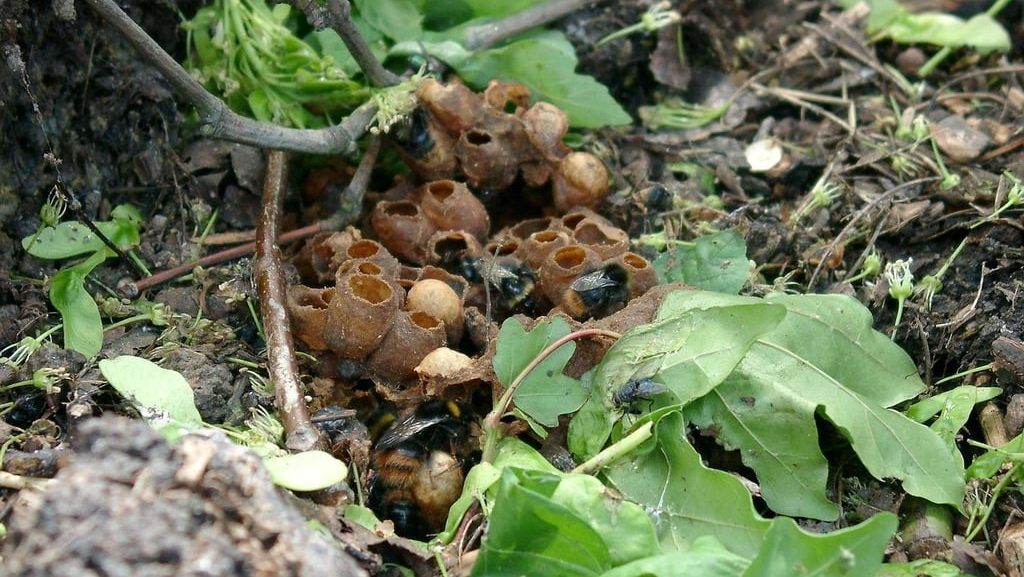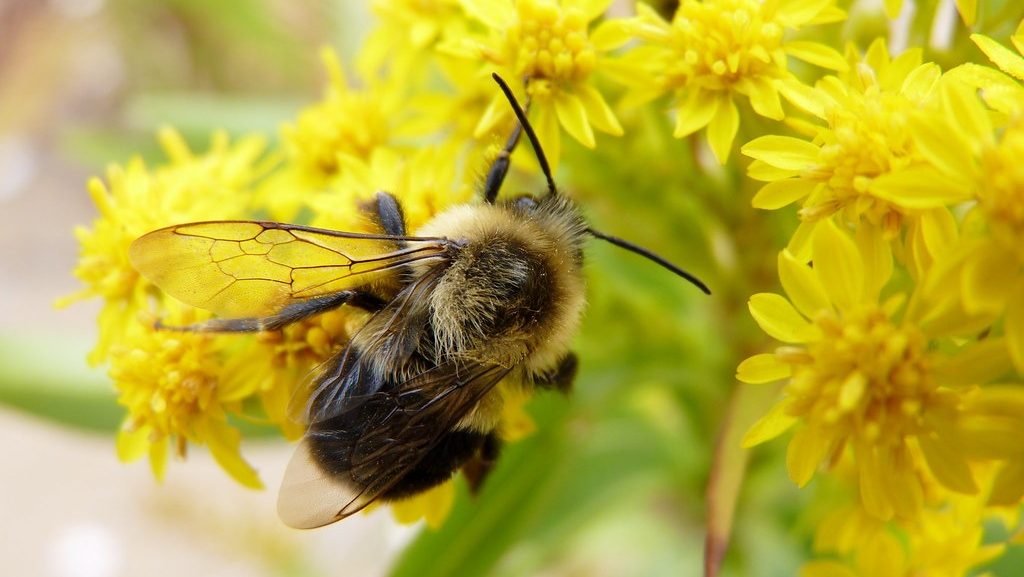Key Takeaways
- Bumble bees can sting but do not bite humans. They’re more focused on pollinating flowers than confronting people.
- Only female bumble bees (queens and workers) have stingers and use them strictly when threatened. Male bumble bees are harmless.
- Bumble bees sting if you accidentally disturb their nest, handle them unintentionally, or make sudden movements around them.
- Bumble bee stings usually cause minor symptoms (pain, redness, swelling), but severe allergic reactions are possible—seek immediate medical help if symptoms worsen.
- Prevent stings by wearing shoes outdoors, checking gardening gloves before use, and respecting bee-friendly zones.
- If bees build a nest too close to your home, contacting professionals for safe removal is recommended to protect both your family and these beneficial pollinators.
 Do you know what? Bumble bees are the most common of our gardens – and misunderstood – visitors. With their fuzzy body, soft buzz, and bright stripes, they are difficult to miss. But here is the case: Many people worry whether these friendly looking insects can be bitten or sting. Let’s clean it immediately: bumbled can sting bees, but they do not bite people.
Understanding this can make your backyard a safe, more comfortable place for all – join!
Do you know what? Bumble bees are the most common of our gardens – and misunderstood – visitors. With their fuzzy body, soft buzz, and bright stripes, they are difficult to miss. But here is the case: Many people worry whether these friendly looking insects can be bitten or sting. Let’s clean it immediately: bumbled can sting bees, but they do not bite people.
Understanding this can make your backyard a safe, more comfortable place for all – join!
Bumble Bees: Friendly Pollinators or Hidden Threats?
- First, let’s talk about their temperament. Bumble bees aren’t exactly looking for a fight. Their main gig? Pollinating flowers. Without these buzzing helpers, we’d have fewer vibrant blooms and less abundant veggie gardens. So, really, they’re doing us all a solid.
Still, it’s fair to wonder: Are they dangerous? Not really. Unlike those aggressive wasps at your last barbecue (you remember those), bumble bees typically ignore people. They’re much more interested in flowers than in you.
Here’s a quick crash course on bee basics:
-
Female Bumble Bees: Only queens and worker bees have stingers, and they sting only when feeling seriously threatened.
-
Male Bumble Bees: Completely harmless—they don’t have stingers and focus solely on pollination and mating.


Not getting a solution?
Get your free pest control estimate today!When Might Bumble Bees Sting?
Even though they’re gentle, bumble bees will sting if provoked. Think of it like this: you probably wouldn’t be thrilled if someone stepped on your house, right? Same goes for bees. The most common scenarios for a sting include:- Accidentally stepping near or onto a hidden bee nest (often in grassy areas or old logs).
- Grabbing a bee by mistake while gardening or picking flowers.
- Making sudden, jerky movements around bees actively gathering nectar.
Just How Bad is a Bumble Bee Sting?
For most of us, a bumble bee sting isn’t exactly fun—but it’s also not the end of the world. Usually, you’ll just experience some minor pain, itching, redness, and swelling at the sting site. Think mosquito bite, but a tad more intense. However, let’s be honest: some folks might react more severely, especially if allergic. Symptoms to watch for include:- Significant swelling far from the sting area
- Trouble breathing or tightness in your chest
- Sudden dizziness or nausea
- Rapid heartbeat or widespread rashes

What Should You Do After Getting Stung?
- Let’s say you do get stung—what next? Here’s a quick step-by-step rundown to handle it smoothly:
-
Stay Calm and Back Away: Avoid panicking—move away slowly to prevent further stings or disturbing nearby bees.
-
Check for Stingers: Bumble bees usually don’t leave stingers, but always check and gently remove if one is present.
-
Clean the Area: Wash the sting site with soap and water to help prevent infection.
-
Apply Something Cold: Use an ice pack wrapped in a towel to reduce swelling and soothe pain.
-
Pain Relief: Take ibuprofen or an antihistamine to ease pain, itching, or mild swelling.
Do Bumble Bees Ever Bite?
Interestingly enough, bumble bees have sturdy jaws but don’t bite people with them. Instead, their mandibles help with chewing through leaves or shaping pollen. You might even spot tiny cuts in your plants occasionally—harmless and beneficial for plants, encouraging them to bloom faster!
How Can You Avoid Getting Stung?
Prevention beats treatment any day, right? Here are some friendly pointers to help you coexist peacefully with your buzzing neighbors: Gardening Tips- Always wear shoes outside, especially when gardening. It’s simple but a lifesaver.
- Before slipping into gardening gloves, check inside to ensure a bee hasn’t decided it’s a cosy spot.
- Watch out for bees busy pollinating; they’re just doing their job, so give them space.
- If you find a nest, gently mark or remember the location and steer clear.
- Remind kids and pets to stay calm if bees buzz close. No sudden moves equals no trouble.
- Plant bee-friendly flowers away from your busiest outdoor areas like patios and play zones.
- Regularly check your property for possible nesting spots like old woodpiles or abandoned burrows, especially as the weather warms up.
What if Bees Move in a Bit Too Close for Comfort?
Sometimes, bees pick inconvenient places for their nests (honestly, who can blame them?). If bees move in too close to your daily hangouts, contact a professional pest control service or a local beekeeper. These pros can safely relocate bee nests without harming these vital pollinators.You know what? Sharing your space responsibly with bumble bees isn’t just good for them; it’s also fantastic for your garden. These fluffy insects play a massive role in ensuring your flowers bloom beautifully and your vegetable garden thrives. A little understanding and a few practical steps can ensure peaceful coexistence, creating a vibrant and safe backyard experience for everyone involved.
 If you feel things have gone out of control, it is advised to contact pest control professionals. Our team can provide a customized approach to protect your home effectively.
If you feel things have gone out of control, it is advised to contact pest control professionals. Our team can provide a customized approach to protect your home effectively.
Visit our Species, Control, and DIY Guide sections for additional resources on bumble bees and ways to tackle a bumble bees infestation.





